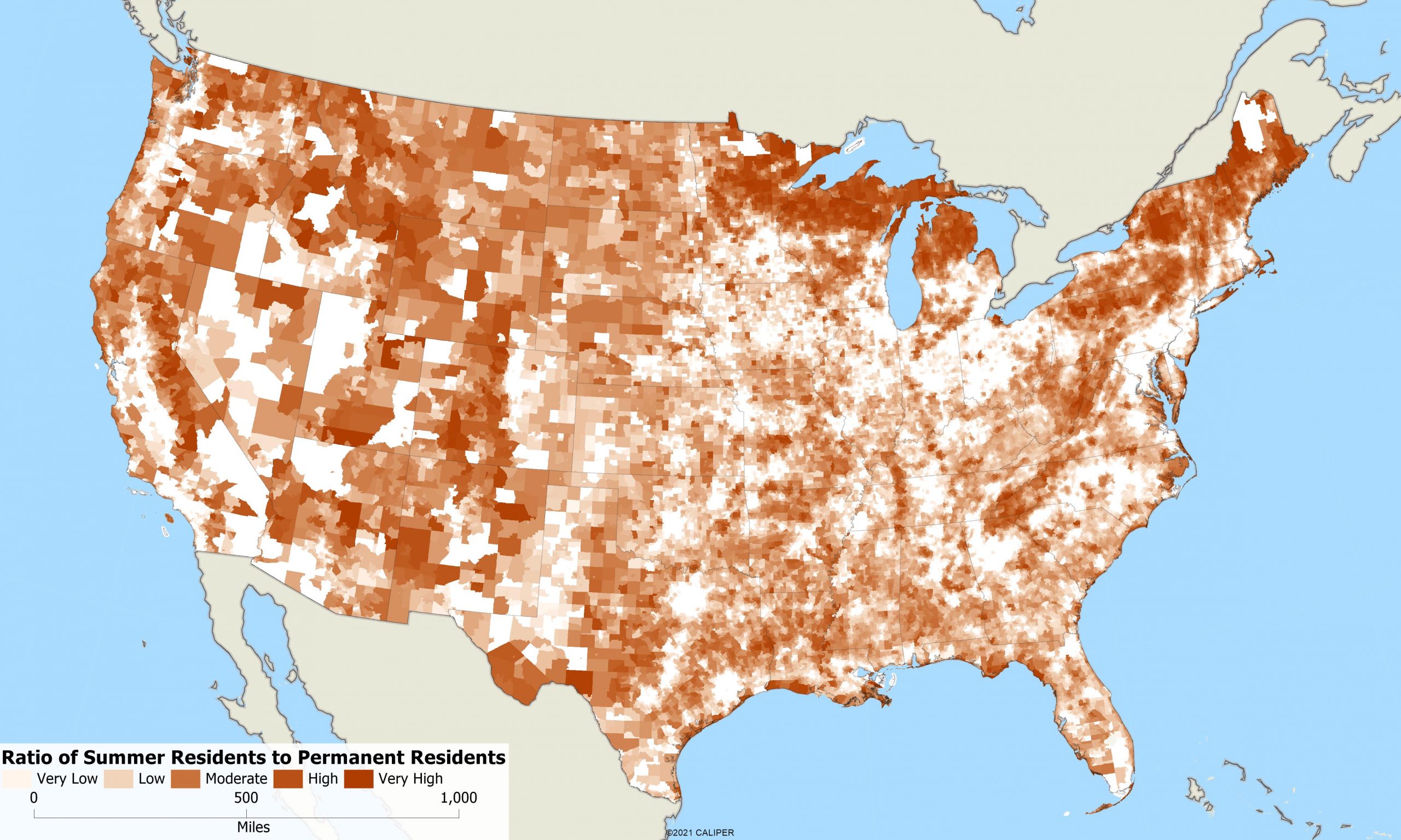Summer is here, and with vaccine rates going up, and COVID rates going down, travel is back in full swing. You are excited to travel, and so are your customers. Understanding the demographics in your area is the most important factor to success, and that includes tourism and non-resident population demographics. Last year, AGS created a database that models the factors which drive tourists to particular locations, and to match that demand with the supply of available accommodations. Thinking about summer travel, we mapped two popular summer tourism industries: Second homes and VRBO rentals, and camping/RV travel.
Our first map shows the ratio between the summer cottagers, those with second homes and VRBO rentals, and the local residents. Dark red areas show where the summer residents swamp the locals. The pattern that emerges is very interesting. There are many cottages in Michigan and Minnesota, in the Appalachians and in the mountains of the western states. Note how the main cities of central Texas are surrounded by places in the hill country especially where people head for the summer.

The second map shows where the Camping/RV crowd head to in the summer. Not a surprise, the coasts are the most popular locations across the U.S. California and Florida pull in the most campers each summer. For this map, we used a 5 mile filter to exaggerate what is otherwise a very sparse pattern.

On any given night in a normal year, upwards of nine million people are found in hotels, second homes, the homes of friends and family, in recreational vehicles, or camping. The impact of the non-resident population on a site – restaurant or retail – can be substantial, often proving to be the difference of locational success and failure. AGS’ new Non-Residential Population database which includes annual and quarterly estimate of where those tourists can be found, bridging an important gap in the analytical toolbox of site analysts. As you can see from the maps, paying attention to the non-resident population in your area can add great value to your strategies.


Recent Comments